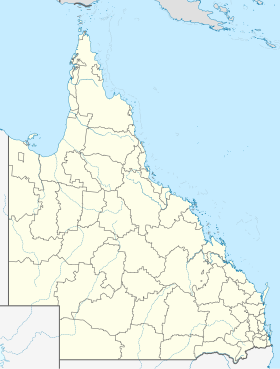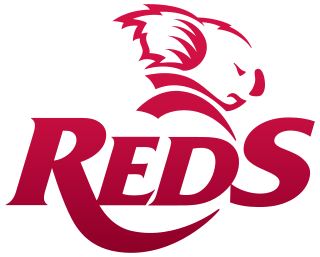
The Queensland Reds is the rugby union team for the Australian state of Queensland that competes in the Southern Hemisphere's Super Rugby competition. Prior to 1996, they were a representative team selected from the rugby union club competitions in Queensland. With the introduction of the professional Super 12 competition they moved to a model where players are contracted to the Reds through the Queensland Rugby Union rather than selected on the basis of club form.

Ballymore is a rugby union stadium situated in Herston, a suburb of Brisbane, Australia. It is the headquarters of Queensland Rugby Union and was the home ground of the Brisbane City team in the National Rugby Championship, until the league's disbandment in 2019. It is also used as a training facility for the Queensland Reds and Australian Wallabies rugby teams.

Rugby union in Australia has a history of organised competition dating back to the late 1860s. Although traditionally most popular in Australia's rugby football strongholds of New South Wales, Queensland and the ACT, it is played throughout the nation.
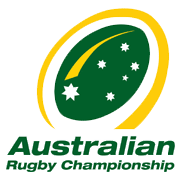
The Australian Rugby Championship, often abbreviated to the ARC and also known as the Mazda Australian Rugby Championship for sponsorship purposes, was a domestic professional men's rugby union football competition in Australia, which ran for only one season in 2007. It was the predecessor to the also now-defunct National Rugby Championship. The competition, similar to New Zealand's ITM Cup and South Africa's Currie Cup, aimed to bridge the gap between existing club rugby and the international Super Rugby competition then known as Super 14. The ARC involved eight teams: three from New South Wales, two from Queensland, and one each from the Australian Capital Territory, Victoria and Western Australia.

Queensland Premier Rugby is a semi professional club rugby union competition in Queensland, Australia. Nine clubs play in the competition, eight clubs are from Brisbane, and one club is from Gold Coast.
The premiership has been contested in its present form since 1929.
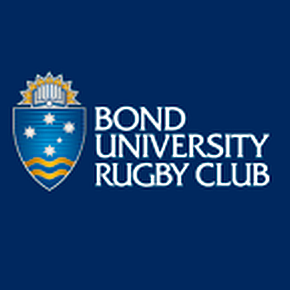
The Bond University Rugby Club is an Australian rugby union football club that competes in the Queensland Premier Rugby competition. The club is based at the Bond University campus on Queensland's Gold Coast.
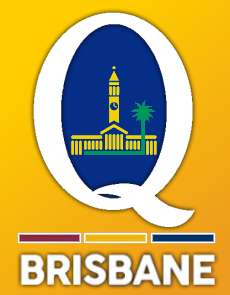
Brisbane City is an Australian rugby union football team based in Brisbane that competed in the National Rugby Championship (NRC). The team is one of two Queensland sides in the competition, the other being Queensland Country. Brisbane City is organised and managed by the Queensland Rugby Union (QRU), with the coaching and training programs utilised by the Queensland Reds being extended to players joining the team from the Reds and Queensland Premier Rugby teams.

The Sydney Stars is a former Australian rugby union football team that competed in the National Rugby Championship (NRC) in 2014 and 2015. The Stars team was established as a joint venture between the Sydney University and Balmain rugby clubs, and was one of four New South Wales teams in the competition.
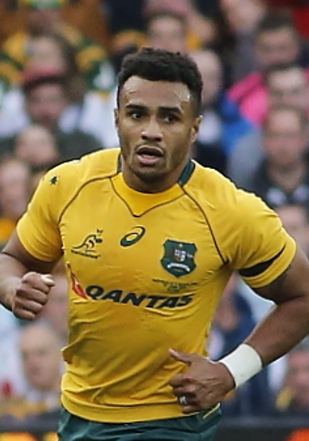
Sanchez William Genia is a professional rugby union player, currently playing scrum-half for the Kintetsu Liners in Japan. He had previously played Super Rugby for the Queensland Reds (2007–2015) and Melbourne Rebels (2018–2019). He also had previously played for Stade Français in France's Top 14 from 2015 to 2017.

The Canberra Vikings, formerly the Canberra Kookaburras, is an Australian rugby union football team that competes in the National Rugby Championship (NRC). The team is based at Viking Park in Wanniassa, and is backed by the Tuggeranong Vikings Group as the licence holder, with the Brumbies and University of Canberra as non-financial partners.
The Ballymore Cup is an under 17 schoolboys rugby union competition run by the Queensland Rugby Union.

Rugby union in Queensland has traditionally been one of the most popular professional and recreational team sports in the state. Rugby union was introduced in the British colony's capital Brisbane in 1876. Initially it struggled to gain a foothold due to the popularity of Australian rules there until it got its break in 1882 with the first inter-colonial matches against New South Wales, and the formation of the Northern Rugby Union. Between 1885 and 1887 it became the dominant code after the leading schools association decided to play it exclusively and after 1890 spread virtually unopposed throughout the colony.

Rob Simmons is an Australian rugby union footballer. He currently plays for Clermont in the Top 14 in France and represented Australia in international fixtures. His position is lock, but he can also play in the backrow.

The Melbourne Rising was an Australian rugby union team based in Melbourne that competed in the National Rugby Championship (NRC). The team represented the rugby community in Victoria and was organised and managed by Rugby Victoria with the coaching and training programs used by the Melbourne Rebels being extended to players joining the team from the Rebels, the local Dewar Shield competition, and local Victorian juniors.

The Queensland Country Championships, also known as the Graincorp Country Championship, is a rugby union competition for teams from regions of Queensland outside of Brisbane. The Queensland Country Rugby Union administers the competitions at Senior and Colts levels. Eleven country sub-unions are grouped into three regional divisions in Northern, Central, and Southern Queensland for the championships.
James Alexander Slipper is an Australian professional rugby union player who plays as a prop for Super Rugby club ACT Brumbies and captains the Australia national team.
The Australian Provincial Championship, or APC was a rugby union football competition played in Australia. It was one of several provincial competitions since the late 1960s, including the Wallaby Trophy and Ricoh National Championship, that have not continued.

The Gold Coast and District Rugby Union, or GCDRU, is the local governing body for the sport of rugby union on Australia's Gold Coast. The GCRU runs a club rugby competition for men's teams with three senior grades, as well as a junior club competition that caters for teams grouped by age from under 6 to under 18 and Girls/Women's 7's on a Friday night.
The 2015 National Rugby Championship was the second season of Australia's National Rugby Championship, involving nine professional rugby union teams from around Australia. The competition kicked off 20 August 2015.

Tim Sampson is an Australian professional rugby union football coach. He is currently an assistant coach of the Melbourne Rebels team that plays in the Super Rugby Pacific competition, and was previously the head coach of the Western Force.



